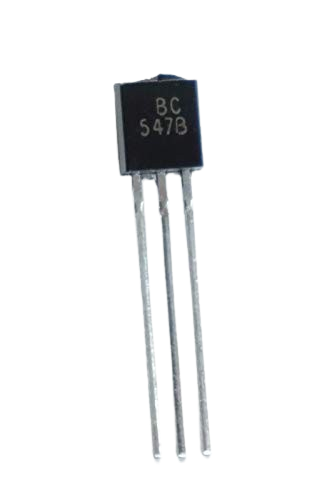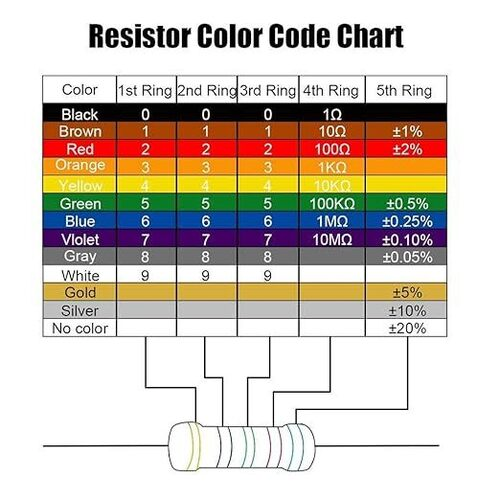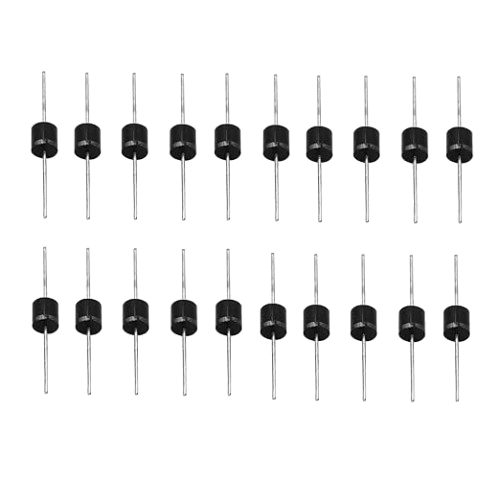Transistors: Working, Types, Applications, and Complete Guide for Beginners and Engineers

Overview
What is a Transistor?
A transistor is a semiconductor device used to amplify or switch electronic signals and electrical power. It is one of the most fundamental components in modern electronics. Made primarily from silicon or germanium, transistors are used in everything from small gadgets to advanced communication systems and computers.Working Principle of a Transistor
Transistors work by using a small current at one terminal (base/gate) to control a larger current flowing through the other two terminals (collector-emitter or drain-source).In simple terms, it acts like a current-controlled switch or amplifier. Depending on how the voltage is applied, it can either allow current to pass or block it, making it ideal for binary logic (ON/OFF).
Main Parts of a Transistor
-
Emitter (E) – Emits charge carriers (electrons/holes).
-
Base (B) – A thin layer that controls the transistor.
-
Collector (C) – Collects charge carriers from emitter.
-
Source (S) – Where carriers enter.
-
Gate (G) – Controls the current flow.
-
Drain (D) – Where carriers exit.
Types of Transistors
1. Bipolar Junction Transistor (BJT)
-
NPN & PNP Types
- Operates using current input at the base.
- Used in amplification and switching circuits.
2. Field Effect Transistor (FET)
- Voltage-controlled device.
- Types:
-
JFET (Junction FET)
-
MOSFET (Metal-Oxide-Semiconductor FET)
-
3. MOSFET
- High-speed switching.
- Widely used in digital electronics, microcontrollers, and power systems.
-
Types: N-Channel and P-Channel
4. IGBT (Insulated Gate Bipolar Transistor)
- Combines high input impedance of MOSFET with high current capability of BJT.
- Commonly used in industrial motor drives, inverters, and electric vehicles.
5. Darlington Transistor
- Two BJTs combined for high current gain.
- Used in high-gain amplification.
6. Phototransistor
- Light-sensitive transistor.
- Used in optical sensors and IR receivers.
Key Characteristics of a Transistor
-
Current Gain (β or hFE) – Amplification factor.
-
Switching Speed – Important in digital circuits.
-
Power Rating – Defines how much power it can handle.
-
Input/Output Resistance – Defines signal handling capability.
Modes of Operation
For BJTs:-
Active Mode – Amplification.
-
Saturation Mode – Fully ON.
-
Cut-off Mode – Fully OFF.
-
Reverse-active Mode – Rarely used.
-
Cut-off Region
-
Triode Region
-
Saturation Region
Applications of Transistors
✅ Amplifiers – Used in audio devices, radios, and televisions
✅ Switching Circuits – Found in computers, mobile phones, and microprocessors
✅ Oscillators – Used to generate AC signals
✅ Power Regulation – Voltage regulators, SMPS, and inverters
✅ Digital Logic Gates – Core of modern microchips
✅ Signal Modulation – For communication systems
✅ Motor Control – Industrial drives and automotive applications
Advantages of Transistors
- Compact size and lightweight
- Long life and high reliability
- Energy efficient
- Cost-effective manufacturing
- High switching speed
- Used in both analog and digital circuits
Limitations of Transistors
- Susceptible to heat and overload
- Limited power handling (in small packages)
- Sensitive to electrostatic discharge (ESD), especially MOSFETs
- Gain variation with temperature and age
Example: Transistor as a Switch
Component Used: NPN BJT Transistor (e.g., 2N2222)
Circuit: A 5V LED switching circuit using a microcontroller output pin
Working:
- When microcontroller sends HIGH signal to base via a resistor (~1kΩ), transistor switches ON and allows current to flow from collector to emitter, lighting up the LED.
- When signal is LOW, transistor turns OFF and the LED is OFF.
Key Insight:
This simple switching behavior is used in all kinds of automation, from appliances to robotics.Transistor Selection Guide
| Parameter | Consideration |
|---|---|
| Application Type | Amplification or Switching |
| Load Current | Choose based on max load |
| Switching Speed | For digital: go with MOSFETs |
| Power Dissipation | Ensure proper heat handling |
| Packaging | TO-92 for low power, TO-220 for high |
Popular Transistor Models
-
2N2222 (NPN) – General purpose
-
BC547 (NPN) – Low power signal transistor
-
IRF540N (N-channel MOSFET) – Power switching
-
TIP120 (Darlington Pair) – High gain
-
IRFZ44N – Common in automotive and motor control
Where to Buy
Prices may vary. Click on "Buy Now" to check current availability and pricing.
Administrator
Frequently Asked Questions
Common questions about Transistors: Working, Types, Applications, and Complete Guide for Beginners and Engineers. Find answers to the most frequently asked questions.
User Reviews & Comments
Share your experience with this IoT Blog. Your feedback helps our community make informed decisions!
Share Your Experience
Help others by sharing your thoughts about this IoT Blog.
Related Blogs
Explore more IoT Blogs in the same category

Resistors in IoT: Types, Applications, Selection Guide, and Circuit Examples
Supporting Components
Resistors are essential components in IoT circuits, helping control voltage, current, and signal flow. This guide explains the types of resistors, their functions, how to choose the right resistor for your IoT project, and real circuit examples. Learn how resistors improve reliability and performance in connected devices.

PC817 Optocoupler: Working, Pinout, Circuit, Applications, and Selection Guide
Supporting Components
PC817 is a widely used optocoupler that provides electrical isolation between input and output using an internal LED and phototransistor. This guide explains its working principle, pinout configuration, circuit connection, and real-world applications in automation and safety systems. Whether you're designing a power supply or a microcontroller interface, PC817 offers a reliable solution for signal isolation.

Diodes Explained: Types, Working, Applications, and Selection Guide for Electronics Projects
Supporting Components
Discover everything about diodes in electronics — from types and working principles to real-world applications and how to choose the right diode for your project. This comprehensive guide simplifies diode selection and usage, making it perfect for students, hobbyists, and professionals. Enhance your electronics knowledge with trusted and clear information.
No Reviews Yet
Be the first to share your experience with this IoT Blog!